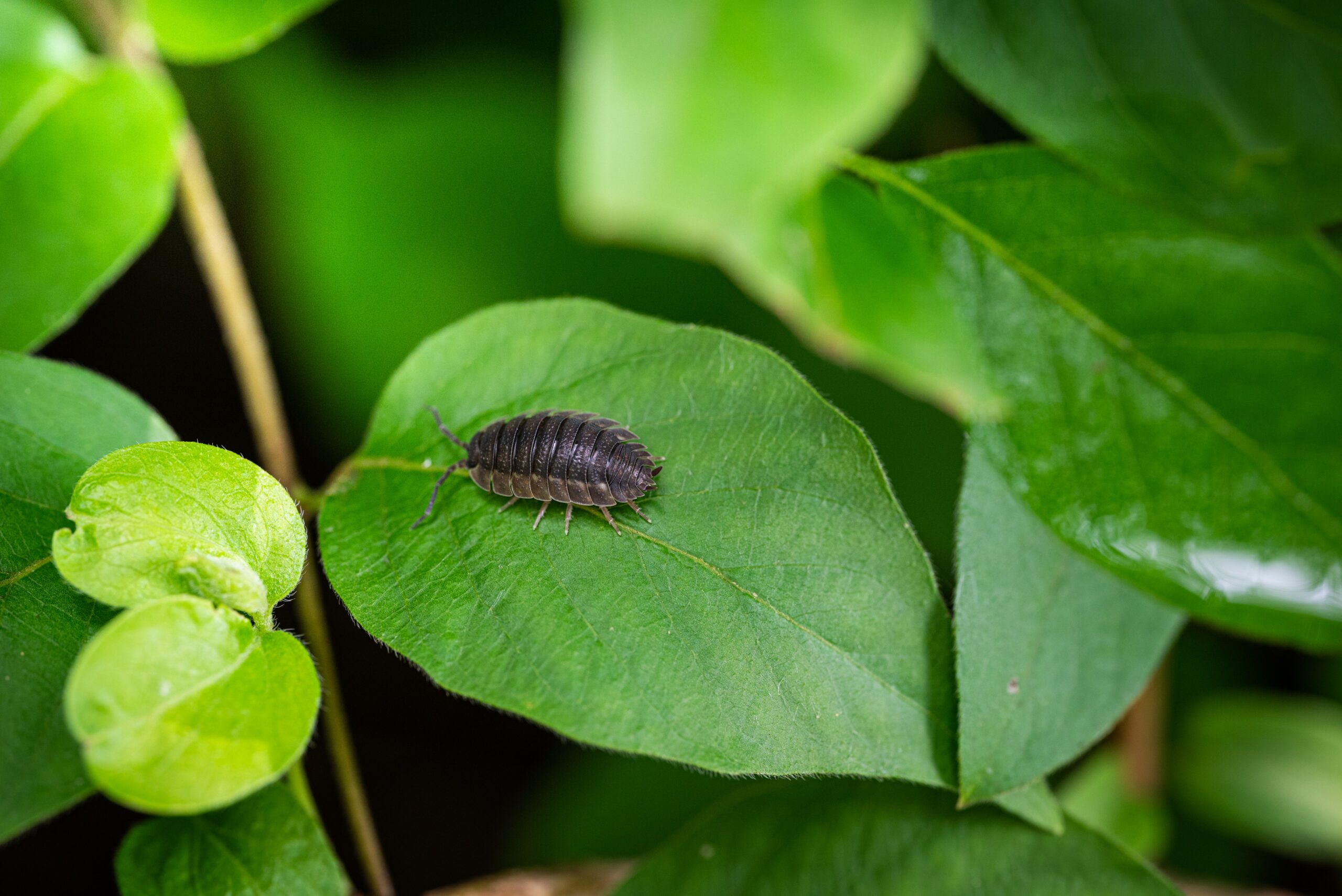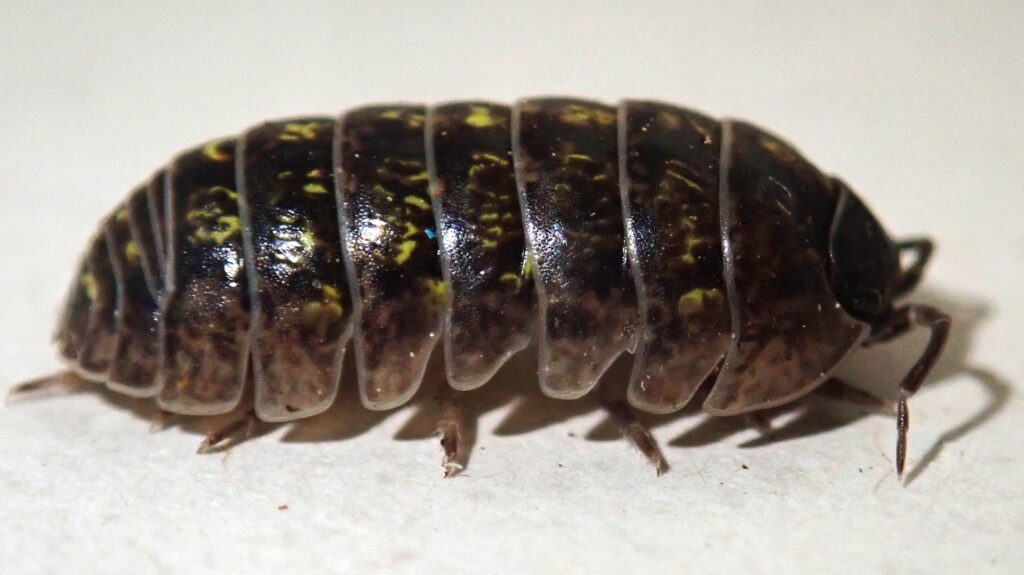
A.K.A. rollie-pollies, wood bugs, armadillo bugs, carpenter bugs, woodlice, wood bugs, doodlebugs, slaters, to name a few! As a child growing up on a farm, I loved playing with pill bugs and watching them roll up into a perfect ball when touched.
Sow bugs were not added to the long list of names because there’s a slight difference. The name “sow bug” and “pill bug” are often used interchangeably; however, the sow bug has two tail-like structures on the rear of its body, and the pill bug does not. Because of the differences in body structure, the sow bug cannot roll up into a ball like the pill bug.
The scientific name for this organism is Oniscidea pronounced “on-a-sid-ea.” Since these bugs have so many common names, in this article I will refer to them as pill bugs.
What's Fascinating About These Life Forms?
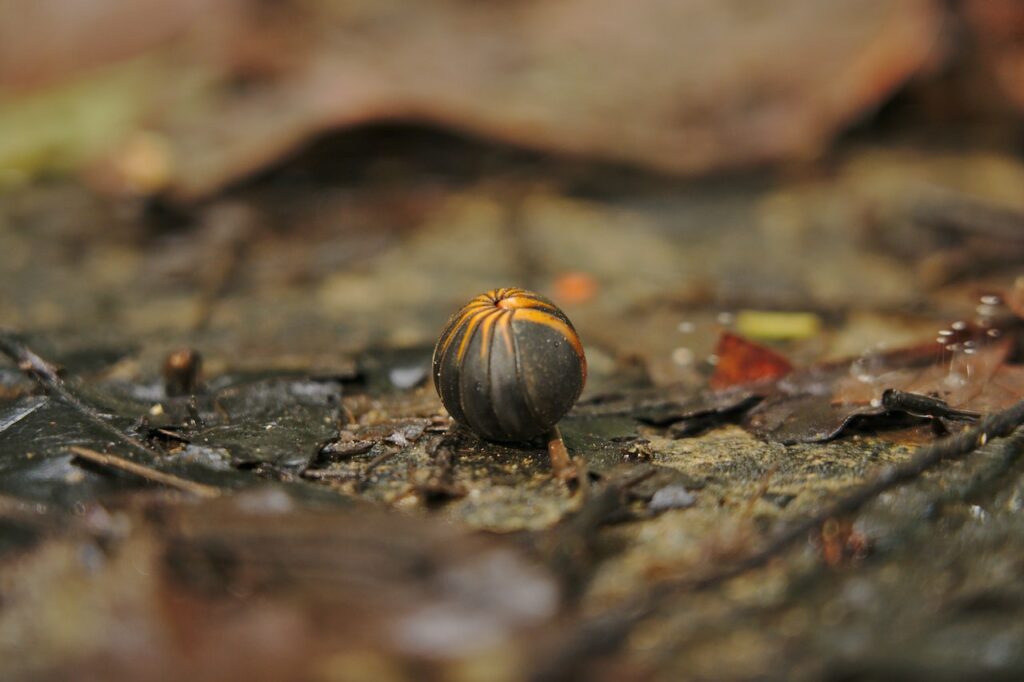
The life forms we most commonly see are referred to as rollers because they do roll up into a tight ball when touched or disturbed in some way. There are over 5,000 species, but they’re not all rollers.
Just turn over a rock or a newspaper that has been on the ground for a while, and it’s likely you will encounter pill bugs. They like dark, moist places, and they feed on decaying matter such as rotting leaves, decaying wood, and fungi. Simply stated, they like many of the leftovers in nature.
They breathe through gill-like structures, and they’re the only type of crustacean that can live on land. These “gills” are located on the underside of the abdomen. These gills must stay moist for them to breathe. If the gills dry out, the pill bug will not be able to breathe and will die.
Science tells us pill bugs were originally aquatic dwellers millions of years ago, and this is why they are drawn to moist environments now. They also absorb water from the air.
Are they beneficial to the garden? Absolutely! Pill bugs may nibble on some seeds and seedlings, and they like fruit that has fallen onto the ground.
Typically, they don’t damage healthy plants. If you find they’re consuming bits of your strawberries, it’s likely because you’re mulching. This mulch creates a dark, moist place, their perfect habitat. Straw may be a better choice to use for mulch, since it’s light and air easily circulates through keeping the environment under the strawberries less moist.
Night is when they like to feed. They’re more active at night because it’s dark and there’s more moisture in the air.
They are not insects! They belong to the crustacean family and are more closely related to lobsters, shrimp, and crabs.
What Wonderful Part Do Pill Bugs Play in Our World of Nature
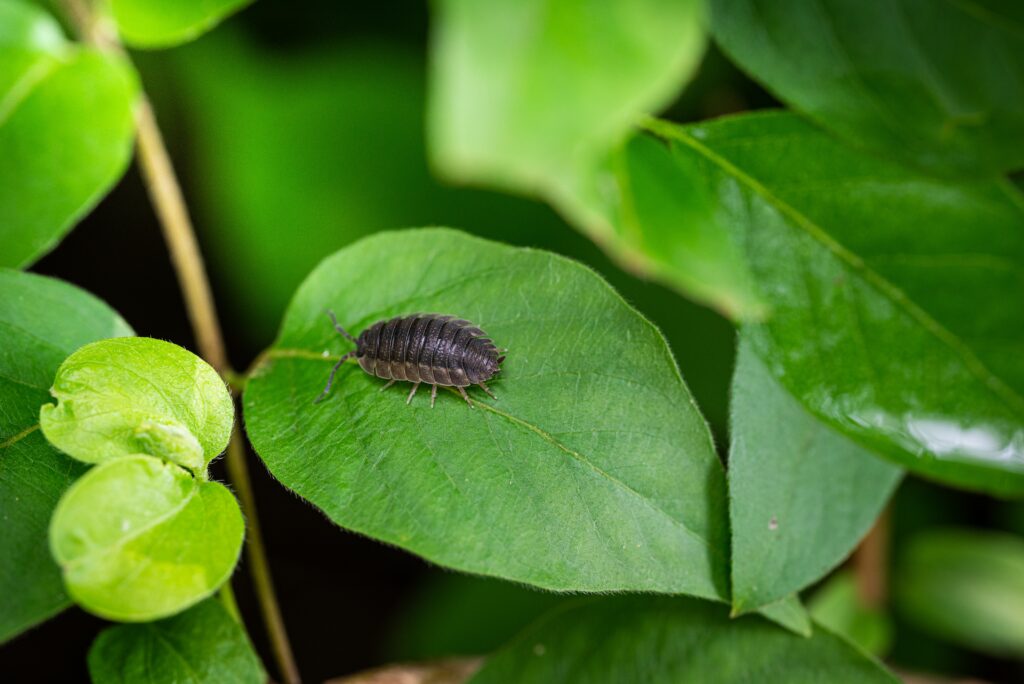
They are natural composters! These industrious little critters feed on dead organic matter. Microbes live inside their bodies allowing them to perform this service and increase the fertility of the soil.
They speed up the decomposition process, amending the soil naturally, and providing nutrients for your plants to thrive. To learn more about how essential microbes (microorganisms) are to life, check out my post.
Pill bugs are known to safely remove heavy metal contaminants from the soil such as lead, cadmium, copper, and arsenic. Many articles claim pill bugs removing these heavy metals from the soil prevents these toxic metals from leaching into the groundwater.
But what happens to these toxic metals when the pills bugs die? The metals are crystalized in their gut, so where do they go? Most research states pill bugs help remove toxic metals from the soil, and a few state the metals “likely” go back to the soil when they die.
Until more studies are completed to clarify exactly what happens to these toxic metals, I’m not going to list removing toxic metals as one of the pill bugs attributes. Nevertheless, they’re still a great contribution to enriching the soil.
Population Explosion!
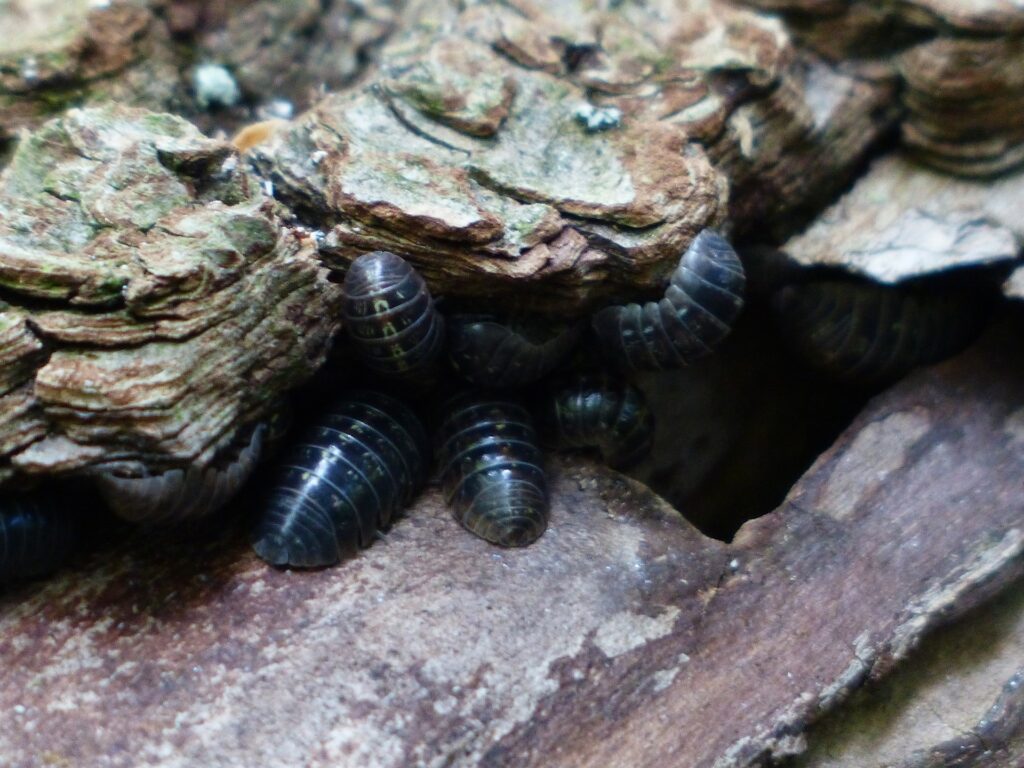
Breeding occurs during the spring, summer, and fall AND brings on one to three generations per year. Momma can lay between 100 and 200 eggs in her pouch (called a marsupium) on the underside of her body. It can take three to four weeks for the young to hatch, and they can remain in the pouch for up to two months.
Pill bugs can produce one to three broods every year. So, that’s a procreation of up to 600 new pill bugs per one momma per year if she produces three generations.
However, not all babies survive. After a couple months, the babies crawl out of momma’s pouch and start feeding in nature.
They are born with 12 legs (6 pair). After going through two molts, they get their seventh pair of legs. The population of these young pill bugs reduces after a couple months. The ones that make it to adulthood can live for two to five years.
Population Control - Best Practices
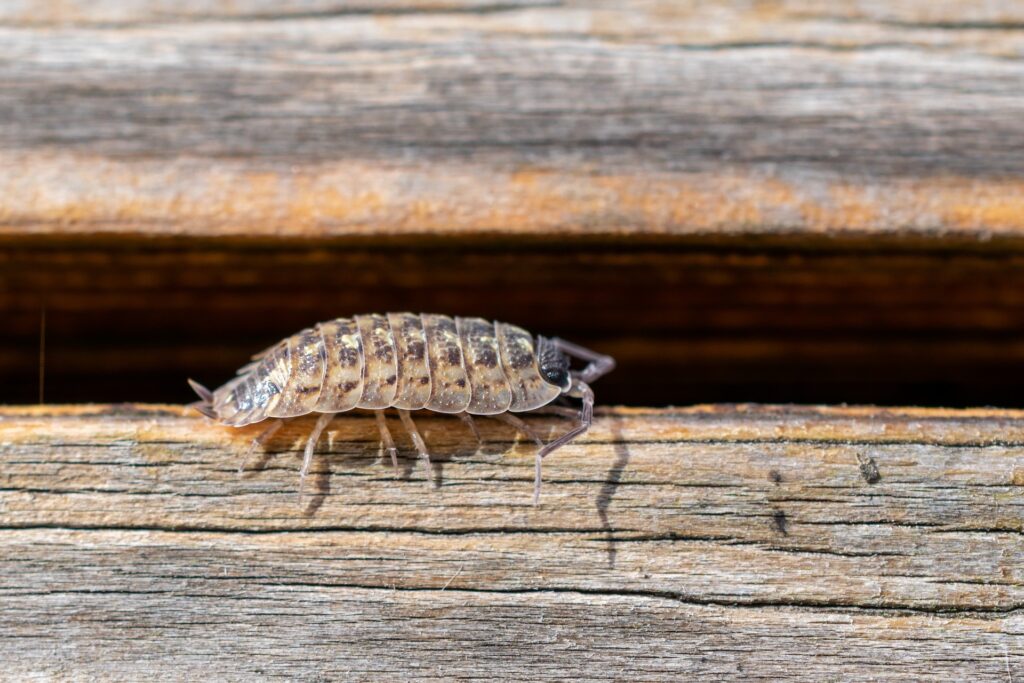
Since pill bugs are beneficial to your garden, here are some best practices to naturally control the population and prevent infestation.
- Since they need moisture to live, I recommend a drip irrigation system in your garden. This type of system will place the water directly where it’s needed, water waste is minimized, and this allows the soil around the plants to dry out faster.
- Be careful with mulch. Yes, we love to mulch our garden to “retain moisture” in the soil as well as the decomposition process adding wonderful nutrients to the garden. However, if you are noticing an infestation of pill bugs, you might consider using a straw mulch since it tends to be more open and airier allowing air circulation to keep the area dry.
- If you compost, (and I recommend you do) keeping a tidy compost pile is essential to reduce pill bug population. Using a composter instead of creating a compost pile, can keep the compost off the ground and less accessible to the pill bugs. Making sure your compost is heating up which is necessary for the decomp process will also help deter the pill bugs. It can get hot inside that heap! I’ve seen advice that a hot compost pile will reduce moisture, but moisture is essential for the compost to decompose. The compost should be moist like the moisture you find squeezing a piece of chocolate cake, but never wet.
And What if Pill Bugs Invade Your Home?

It’s not unusual to find these creatures inside your home. If they don’t find moisture in your home, they will die rather quickly.
They serve a great purpose in nature, but I’m certain you don’t want to live with them. Their favorite places to hang out include basements and crawl spaces because these locations will likely have the most moisture and are often dark.
Inside the house is not the desired habitat for pill bugs, because they usually can’t find the moisture they need. If you notice a lot of these critters moving in with you, make sure you check for any moisture issues that may need to be repaired.
Since pill bugs are attracted to decaying mulch, leaves, or other debris, keeping these materials clear from the foundation of your home would be a good practice to discourage pill bugs from entering your home.
If you’re going to initiate population control, I highly recommend using an organic solution to remove them from your home. Diatomaceous earth works. Place this powder in cracks and crevices and places where they seem to congregate.
Under a microscope, diatomaceous earth looks like many tiny hollow cylinders covered with barbs. As the pill bugs crawl over the powder, the tiny, barbed cylinders penetrate the coating of the body. Even though pill bugs have a shell covering their upper body for protection, the underbody is softer and can sustain damage and punctures from the diatomaceous earth. This causes body fluid to be drawn out of the bug. Pill bugs need their moisture and body fluids to survive. To read more about how this works, click here.
Use only when needed and as directed on the package. It can also be detrimental to other beneficial insects/bugs.
Recapping
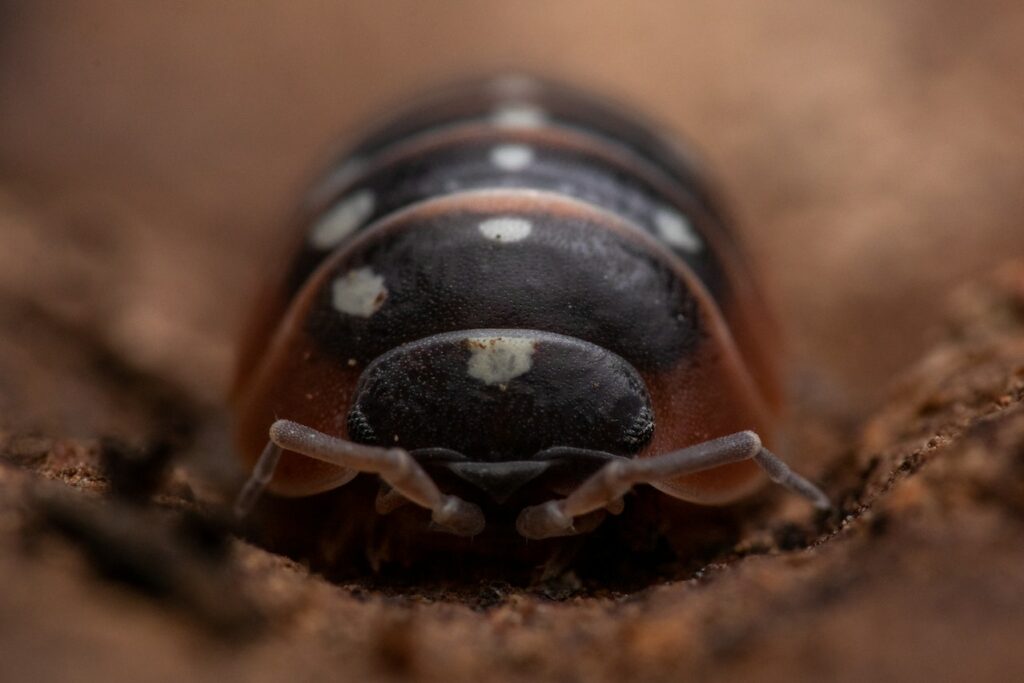
Pill bugs have a positive impact in nature. They consume organic matter such as decaying leaves, mulch, and other debris, and excrete needed nutrients into the soil necessary for plant health.
These creatures hang out in dark, damp places. They breathe through gills located on the underside of their bodies, and these gills much remain moist for breathing to take place. If the gills lose their moisture and dry out, the pill bug will die.
As for reproduction, pill bugs are prolific! The female can lay 100-200 eggs per brood, and she can do this up to three times per year. After hatching, the babies can stay in her pouch for up to two months.
Once the young pill bugs escape momma’s pouch, they do not all live. This is nature’s own population control effort. Those that do survive can live two to five years.
Home invasion is not preferred by pill bugs. However, they can get off their better path and find themselves indoors where dry conditions can eliminate them.
If you find these unwelcomed visitors in your home, first try the organic, safe methods of removal. Clean up any mulch, leaves, and other organic debris that’s close to the foundation of your house. If there is no moisture in the areas where you find an infestation, they will soon die on their own.
After safer measures are exhausted and the pill bugs are still hanging out in your house, use organic food-grade diatomaceous earth. Even though it’s food-grade, don’t inhale it. Diatomaceous earth is not lung friendly, and after reading the above description of what it looks like under a microscope, you can see why.
I strongly recommend using a respirator ANYTIME you’re using chemicals, organic or not, which can leave particles in the air that can be inhaled. Most of all, take the necessary precautions to take care of yourself! Click here to read my review on the respirator I use.
Your Assignment - Should You Accept It...
- Go outside and explore your garden. See what lurks within! If you don’t know what it is, do the research and learn. Learning is a rewarding opportunity.
- Remove debris close to the foundation of your house.
- Search your house of any unwanted visitors. If you find any…
- Exhaust all organic solutions first.
- If you must take extreme measure, use safe, food-grade diatomaceous earth. It works on many pests including pill bugs. Be careful of the beneficial insects.
- Consider ordering my recommended respirator to have on hand any time you use fertilizers, pesticides, fungicides, organic or not.
- Protect yourself!
